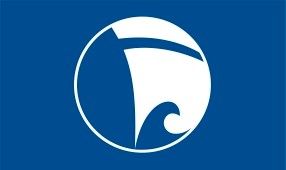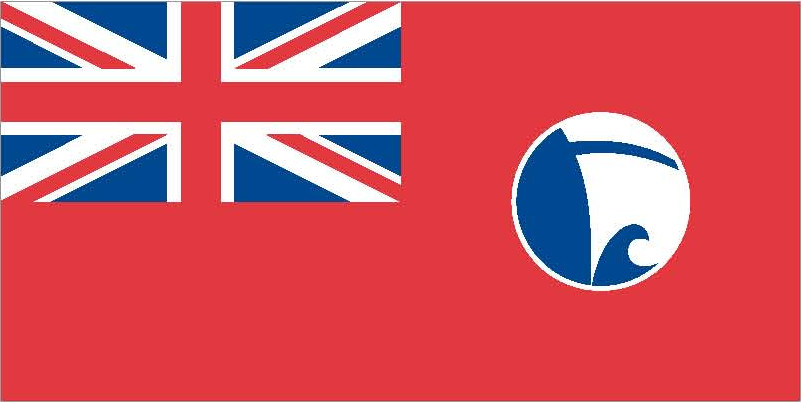Previous names
- James Taylor Peddie
- Cawstone
Details
Construction
Dimensions
History
BRANDRAM was built in 1915 by the Sunderland Shipbuilding Co. Ltd. Her yard number was 309, and on acceptance by the Admiralty she was assigned the number X-67. Contrary to the design specification her hull was of iron plate construction. She was powered by two Gardner diesel engines, a model 6LW port engine and a model 6L3 starboard engine.
In February 1915, The Director of Naval Construction (DNC) at the Admiralty received instructions to design a large type of lighter or barge. This was to be self-propelled, suitable for transporting troops, horses and field guns, and capable of landing them on a shelving beach. Too hundred were needed for the proposed Gallipoli campaign. Construction was to be overseen by Walter Pollock of James Pollock & Son based at 3 Lloyds Avenue in London.
The request came at the same time as a smaller lighter, designated the ‘Y’ class, was being considered. The larger landing craft were to be designated as ‘X’ class. The matter was one of extreme urgency, and the design was completed in just four days. Twenty-seven yards in the North East of England and three on the Clyde were appointed to construct the lighters, which were given the nickname ‘Black Beetles’.
Following the 1915 order for 200 X-lighters for Gallipoli a total of 25 motor store lighters were built in 1916; these were designated X-201 to X-225. In addition some 25 dumb (non-propelled) lighters were constructed; these were designated DX-1 to DX-25. A number of the surviving ‘X’ lighters are listed on the National Register of Historic Vessels, including SPITHEAD (X-44), PETER P (X-57) and BRANDRAM (X-67).
The design agreed involved an angular pontoon shaped bilge section amidships, tapering to a ship shape form at the ends, with a spoon shaped bow to enable the vessels to beach successfully. The hull was constructed of mild steel. Certain small departures from the specification were permitted to take account of limitations in the plant available at some of the smaller yards, in order to facilitate the speedy construction of the vessels.
Each of the vessels was first given a yard number, but on acceptance by the Admiralty they were designated ‘X’ lighters and numbered from X-1 to X-200. Despite the allowance for ‘certain small departures’ only, variations in speed of production, stock availability and local materials resulted in significant constructional differences from one yard to another. Of the 200 built in 1915, 14 were converted to carry and pump water; in 1916, a further nine were converted to water carrying, and five were converted to carry oil fuel.
Not all the X-lighters built ended up going to Gallipoli. Those that did were given an operational number; those used for transporting men and horses were given a ‘K’ number; those for transporting water were given an ‘L’ number.
As X-67, BRANDRAM was used as a landing craft during the First World War, but she made it no further than France during her service. From 1920, many of the 200 lighters were sold to private firms and shipping agents as well as to the governments of France, Egypt, Greece and Spain. Sixteen were taken to Malta, which had been the support base for the Gallipoli Campaign.
Significance
1. What is the vessel’s ability to demonstrate history in her physical fabric?
Evidence for designs, functions, techniques, processes, styles, customs and habits or uses and associations in relation to events and people. How early, intact or rare these features are may impact on significance.
BRANDRAM was built to order by the Admiralty in February 1915 as a motor barge with iron plate construction. She was one of 200 X-Lighters designed for use in the Gallipoli campaign with the plans completed in only four days. Variations in the function and design of the lighters changed from yard to yard, depending on the materials available and local methods of shipbuilding. She is powered by two Gardner diesel engines, model 6LW port engine and model 6L3 starboard engine.
2. What are the vessel’s associational links for which there is no physical evidence?
Associations with people or places. Off-ship research.
BRANDRAM was built by the Sunderland Shipbuilding Co. as one of the X-lighters known as ‘Black Beetles’ and was assigned the service number X-67. She is a rare example of a surviving ‘beetle barge’ and her design also links her to the First World War Gallipoli Campaign, the boat designer James Pollock, and the First Sea Lord, Lord Fisher. The idea for the X-lighter came from Walter Pollock of James Pollock & Son. It was brought to the attention of Lord Fisher through Walter Pollock’s 1903 book ‘Vessels of Various types’. However, although built in 1915, it is believed that BRANDRAM saw little action in the First World War. She was used as a landing craft, but made it no further than France. In her working life, BRANDRAM has been employed variously as an oil barge, a sand barge and a general cargo barge. She is also significant for playing a role in the Second World War when, as C7, she was again requisitioned by the government between 1940 and 1945. She has been recorded on the National Register of Historic Vessels since 2011.
3. How does the vessel’s shape or form combine and contribute to her function?
Overall aesthetic impact of the vessel, her lines, material she was built from and her setting. Does she remain in her working environment?
BRANDRAM’s original function was as a war-time landing craft. As such, she was designed with an angular bilge section amidships tapering to a ship shape form aft and fore, with a spoon-shaped bow for ease of a beach landing. She retains this shape today. She was used for other purposes between the wars, but returned to her primary function in the Second World War. As a motor barge she was designed to be functional rather than aesthetically appealing. BRANDRAM is currently located at Stoke on the River Medway, where she continues in static preservation afloat.
Source: NHS-UK team, 23 March 2016.
This statement was developed as part of the Heritage Lottery funded First World War project. http://www.ww1britainssurvivingvessels.org.uk/
Key dates
- 1915 Built by Sunderland Shipbuilding Co and used as a landing craft during World War I
- 1920/1940 Used as oil and sand barge named James Taylor Peddie and Cawstone
- 1940/1945 Requisitioned by government during World War II and named C7
Sources
David Mallard, X-Lighters - The Black Beetles
Own this vessel?
If you are the owner of this vessel and would like to provide more details or updated information, please contact info@nationalhistoricships.org.uk






